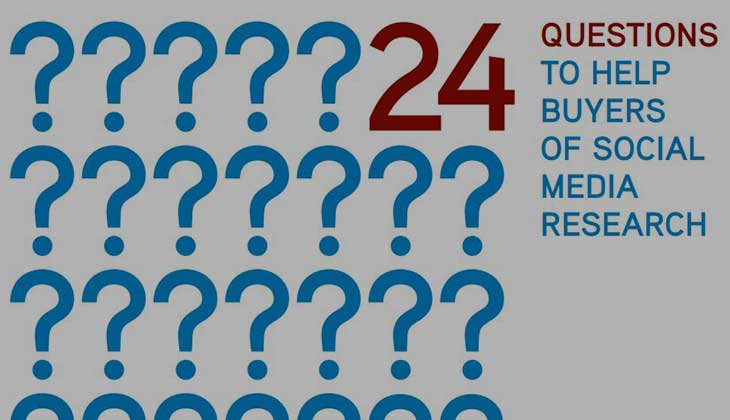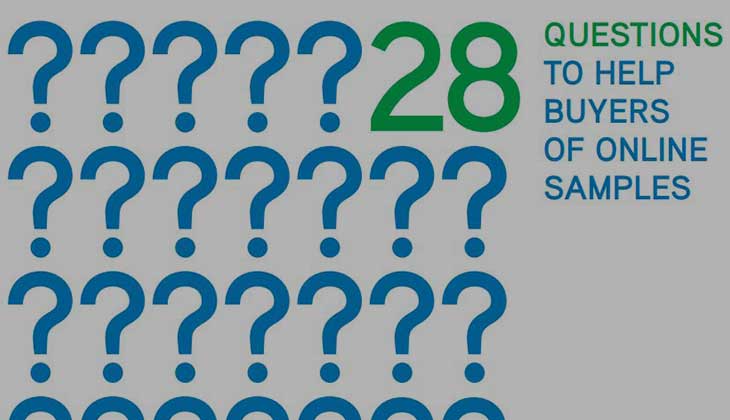Administration (billing and payments)
Can I receive a hardcopy of the invoice?
How and where do I receive the renewal invoice?
Membership renewal information and invoices are always sent by email directly to the member. We kindly ask you to arrange payment (either directly or via your company).
How do I pay online?
You can pay online on ESOMAR website with credit cards such as Visa, MasterCard, American Express, JCB, or V PAY by Visa. It is also possible to pay using online payment service from PayPal.
There is NO ADDITIONAL CHARGE to pay online by credit card or by online payment service.
Personal data (including name, address and credit card details) will be sent over a secure SSL connection and cannot be read by third parties.
I did not receive my renewal invoice. When is my membership up for renewal?
You can see the expiration date of your membership when you login to MyESOMAR and download the Membership Certificate. An invoice will be sent to you by email automatically approximately 2 months prior to this date. If you have not received an email, please check your spam filter as well. You can request the invoice at finance@esomar.org.
I would like to pay online, however I received a message that the online payment website cannot proceed with my payment. What should I do?
Often an invoice number or reference code is entered incorrectly, causing the system to reject the online payment. Please double check the information provided and that has been entered correctly.
Please note that it can take up to 24 hours for new invoices to be processed in our payment database. Therefore, if your invoice is dated today, it may not be possible to complete your payment until tomorrow. Please try again, however if the problem persists contact the ESOMAR Finance Department at finance@esomar.org
In order to arrange for payment my company needs to have a special contract/agreement signed off by ESOMAR. Is this possible?
Any additional terms and conditions must be agreed in writing (see our terms and conditions, paragraph 4).
My company requires a PO number to be added to the invoice. How do I get that done?
Please send us the PO number by email to finance@esomar.org and we will amend the invoice for you. Do not forget to reference the invoice number in your email.
My question on is not listed in this billing and payments FAQ. Who should I contact?
Please contact the ESOMAR Finance department
Email: finance@esomar.org
Telephone: +31 20 664 2141
The company information on my invoice is not correct. How can I request a new invoice?
Send an e-mail to finance@esomar.org stating your:
- Invoice number
- The full company name, billing address and contact person that will appear on the invoice
- The email address where the invoice is to be sent
Make sure you put "Invoice adjustment" as the subject of your e-mail. We will automatically cancel your invoice and send you a new invoice with the correct information within 2-3 working days.
Awards
How can I participate in the ESOMAR awards?
There are a number of ways you can participate in the awards; submitting projects, nominating candidates or writing papers for ESOMAR global events. More information is available in the awards section of our website.
What awards does ESOMAR offer?
ESOMAR celebrates excellence in the area of market research with a range of internationally renowned industry awards.
- ESOMAR Excellence Award for the Best Paper
- ESOMAR Congress Awards
- ESOMAR Excellence Award For Standards Of Performance In Market Research
- ESOMAR Young Researcher of the Year Award
- ESOMAR Best Presentation Award
- ESOMAR Research Effectiveness Award
Full details on the ESOMAR awards are available under our awards section.
When are the awards open for entries?
The awards are generally open to entries in the first 6 months of the year. The Excellence Award for Best Paper Award is open throughout the year. More information is available under our awards section.
Business opportunities and Partnerships
Can I buy mailing lists of contacts from ESOMAR?
Through our business partnerships and opportunities team, we provide your organisation with a wide variety of speaking opportunities at our events, branding and access to those who may be interested in your products, services, and content. For more information, please contact us at business@esomar.org
Can we sponsor and present at ESOMAR-hosted events?
Absolutely, we offer a wide variety of packages to suit any budget and support us to deliver great content to a unique global audience. As each event is different, reach out to us to explore the best package to achieve your desired goals. For more information, please contact us at business@esomar.org
Do I get the contact details from our sponsored webinar?
Yes. We share the contact information of registered delegates enabling you to contact your past attendees with related offers. This is subject to the limitations defined in our privacy policy. For more information, please contact us at business@esomar.org
What advertising options exist on ESOMAR's industry blogs (Research World)?
Our full offer can be found on the Research World website. If you need further information, reach out to us and we can explore together the best package for you. For more information, please contact us at business@esomar.org
Career development
How do I nominate students to attend ESOMAR global events?
We are always looking for student nominations and your support is appreciated. Students can only be nominated by their professors. For more info please contact us at students@esomar.org.
I am interested in getting involved in the research industry, can you help?
One of the best places to start understanding what the industry in your country has to offer is to get in touch with the relevant ESOMAR representative for your country or region. If you are doing a post graduate course ESOMAR offers a number of career events which we organise alongside academic institutions to showcase what research can offer young people.
I am interested in hiring a new colleague – can you help?
Advertisements can be placed on the ESOMAR Job Board for a small fee. All job positngs receive promotion through the ESOMAR website and member and non-members newsletters, received by more than 35,000 professionals.
I work in the research industry and am looking for a new challenge – can you help?
The ESOMAR Job Board has a number of career opportunities available. Be sure to check it frequently for new career postings.
Codes & guidelines
Are there circumstances where a researcher can pass on a respondent’s personal identifiable data to the client?
Unless national provisions require stricter regulations, a respondent's personal identifiable data can be passed on to the client only under the following conditions;
- the respondent has explicitly expressed this wish and/or
- the respondent has given their explicit consent and
- on the understanding that no commercial activity will be directed at them as a direct result of their having provided information.
As an ESOMAR member, how do I make sure I am applying the ICC/ESOMAR International Code correctly?
Whilst the Code contains the key principles, ESOMAR's Notes to the Code provide more detailed guidance on how to interpret and apply the code in practice, for instance in relation to whether or not a respondent must be told if the researcher might wish to re-contact the respondent for a further interview at a later date.
ESOMAR has also issued guidelines on specific aspects of market, social and opinion research such as online research, social media research and research via mobile phone.
Can I make a complaint if an ESOMAR member does not abide by the ICC/ESOMAR Code?
ESOMAR has disciplinary procedures to examine cases of possible breach of the ICC/ESOMAR Code and Notes by an ESOMAR member. Our complaints procedure outlines the steps to follow to pursue disciplinary action against an ESOMAR member.
You will be asked to provide evidence to substantiate your complaint which will be reviewed by ESOMAR's Professional Standards Committee. If it appears that the complaint has merit, ESOMAR's Disciplinary Committee will examine the allegations further and if it finds that an ESOMAR member has breached the ICC/ESOMAR Code, it can impose sanctions ranging from a private warning to expulsion from membership as well as publication of the name of the individual and the sanction imposed.
Can researchers access content within private areas on social media sites?
If it is absolutely necessary for researchers to do so, they must have the site operator's permission, it must be made clear to all users that this is happening and they must provide individuals with a process to opt out from such data collection.
Researchers must observe great sensitivity interacting with people in private spaces and if this needs to be done, they must observe the recommendations of the guidelines on consent and notification.
For more details, go to the Social Media Research Guidelines.
Can we send unsolicited e-mails to recruit respondents for research purposes?
Researchers need to verify that individuals contacted by e-mail have a reasonable expectation that they will receive a contact for research. This means that all of the following conditions must exist:
- A substantive pre-existing relationship exists between the individuals contacted and the research organisation, the client or the list owners providing sample for the research;
- Individuals have a reasonable expectation, based on the pre-existing relationship, that they may be contacted for research;
- Individuals are offered the choice to be removed from future electronic contact in each invitation in a clear and distinct way and this must be free of charge and easy to implement;
- The invitation list excludes all indinviduals who have previously taken the appropriate and timely steps to request the list owner to remove them.
For more details, go to the Online Research Guidelines.
Can we share identifiable quotes from social media sites with our clients?
The ICC/ESOMAR Code states that personally identifiable data collected for research purposes can only be reported in an identifiable form or passed to a client if the person has explicitly expressed this wish or given their consent on the understanding that no commercial activity will be directed at them as a direct result of their having provided information. This is reflected in the Guideline on Social Media Research.
This permission should either be obtained via the social site's Terms of Use or by direct contact with the individual concerned.
If it is impossible to get permission, the information must be filtered to remove personal identifiers (if the data collection process is automated) or masked or cloaked so that the individual cannot be identified. Particular care is needed to anonymise comments on sensitive areas.
The guideline does not prohibit researchers from collecting personal data for non-research purposes, but it requires full transparency to respondents and clients in line with the ICC/ESOMAR Code which states that data collected for research purposes must not be used in any manner incompatible with these purposes.
For more details, go to the Social Media Research Guidelines.
Can we share respondent photos or videos from social media with our clients?
If the data collected includes images of identifiable people, researchers either need consent from the poster to share these with the client, or they must apply techniques such as pixilation of faces.
They should however keep in mind that in some cases, this might not be sufficient to anonymise the images in some B2B contexts or when researching very small groups and they should then refrain from sharing the photos or videos.
For more details, go to the Guideline on Passive Data Collection Observation and Recording and the Social Media Research Guidelines.
Do the same rules for online research also apply to interactive mobile devices?
Yes, the same requirements for contacting people, security and downloads apply. Researchers must also take into consideration additional issues such as how to deal with potential costs to the respondents, appropriate designs for smaller screens and how to handle location data.
For more details, go to the Online Research Guidelines.
Does ESOMAR publish a standard contract between client and research company?
As research studies can vary so widely, ESOMAR does not provide a standard contract, but to help both clients and research providers, it has issued a checklist of points to be considered including:
• Objectives of the research.
• Technical specifications of the study.
• Cost estimates.
• Other contractual issues.
For more details go to the ESOMAR Guideline on How to commission research - Reaching an agreement on marketing research project.
How do I find out how the law applies in a specific country?
ESOMAR can provide some guidance on the rules regulating research in different countries but for details, contact the national association in the specific country. You can use the association search tool on the ESOMAR website, to find association contact details.
How long should a research company keep records?
In the absence of any agreement to the contrary, in the case of ad hoc surveys the normal period for primary field records (e.g. original completed questionnaires or similar basic records) should be retained for one year after completion of the fieldwork and three years for continuously reporting panels unless national law requires a shorter period.
To allow questions to be answered about how the research was conducted or about the results, including after the research project has been completed, the retention period of the following records shall be as follows, unless otherwise agreed with the client:
• primary records: 12 months
• a copy of all other final versions of documents related to the research project: 24 months
The research service provider shall inform the client about the retention periods. The research service
provider and the client can agree on a longer or shorter retention period. This agreement shall be documented. If the research is later repeated, or further research is later carried out within the same project, the storage period shall be said to begin upon conclusion of the entire research project.
For more detail go to the ESOMAR Guideline on the Mutual rights and responsibilities.
If the contact list is provided by the client, can a researcher tell the client which people did not participate in the survey so the client can encourage people to respond?
ESOMAR does not recommend passing this information to the client. The distinction between market research and other data collection activities would be blurred since the research is in effect a joint effort between the researcher and the client. However, should the client wish to encourage people to respond they could send a general message to everyone on the list referring to the survey and research company, noting that some people might have already responded.
The normal approach is for the researcher to contact the individuals and remind them that they are invited to complete the questionnaire.
For more detail go to the ESOMAR Guideline on Customer Satisfaction Studies.
Must researchers obtain consent to collect social media data for research purposes when people post their views on websites which are open to the public?
Some people who post comments on social media sites might not mind that their remarks are collected and shared but others might take an opposite view.
The Guideline on Passive Observation to which this type of research is most akin states "The things that people are observed doing in a public place cannot be regarded as private or inaccessible to a researcher" and "There may be instances in public places where informed consent from individuals is impossible to achieve. In those cases public notice should be given about the data collection i.e. CCTV operation". This was written to guide researchers observing behaviour in physical spaces, but the same principles should apply to observation on social platforms.
The Guideline on social media research specifically refers to the Terms of Use of social media websites as a form of notification that data might be collected from their postings. But if consent has not been obtained (directly or under the ToU) researchers must ensure that they report only depersonalised data from social media sources.
For more details, go to the Social Media Research Guidelines.
Must researchers take special measures when interviewing children and young people online?
Researchers must always take all reasonable measures to ensure verifiable and explicit permission is obtained from a parent or legal guardian when inviting a child to participate in a research survey. They must avoid asking children and young people questions on topics generally regarded as sensitive and in any case handle this with extreme care. This may mean that certain types of surveys should not be undertaken. They must also avoid collecting personal information relating to other people (for example, parents) from children.
In the online environment, researchers will need to use special procedures to secure the permission of a parent before carrying out an interview with children. As an email may not guarantee that the email address given by the child is their parent's, nor that the person replying is the parent, we recommend telephone or mail confirmation directly from the parent/guardian.
Where researchers are setting out to recruit children for repeated surveys they should consider:
• Recruiting parents with children of the required age and then managing the research process with the agreement and monitoring of the activity by the parent.
• Enabling password protection of surveys so that the entry of a password known only by the parent is required which means the parent must agree to provide it before the child can proceed in the research.
Prior parental consent will not be required to collect a child's or parent's e-mail address solely to provide notice of data collection and request consent or to collect a child's age for screening and exclusion purposes. If this screening leads to the decision that a child does qualify for interview, parental consent must then be sought to continue with the interview.
For more details, go to the Online Research Guideline and the ESOMAR Guideline on Interviewing Children and Young People.
My client wants to observe a group discussion. Is this allowed?
Some clients may wish to observe an interview or group discussion for quality control purposes or to gain a better understanding of the research findings.
If so, the researcher must first obtain the agreement of the respondents concerned and also ensure that the observers are fully aware and abide by the ICC/ESOMAR International Code. The researcher should also ensure that the observers are not people who are likely to know or have a direct dealing with the individual respondents being interviewed. If they do, they should be asked to stop observing.
More detail may be found in the ESOMAR Guideline on Passive Data Collection, Observation and Recording.
Our client wants to know which companies were interviewed in B2B research. Can we provide this information?
B2B research is a difficult area. As far as we know, only Italian data protection legislation treats companies as legal individuals but Germany also has strict rules. You should always check with the associations in the relevant countries when conducting B2B research. Contact details for associations can be found on the associations section of our website
A key issue is whether the client could identify individual responses (companies and individuals) from the data, once the client has the list of which companies took part in the survey.
If there is any doubt about whether this would be possible, then the research agency should not pass on this information without the appropriate permission.
Results should be presented in an aggregated form from which individual responses cannot be identified and in this case there should not be a problem releasing the list of companies included in the survey.
For more information visit the ESOMAR Guideline on Customer Satisfaction Studies.
What are the key ICC/ESOMAR Code principles?
The Code is based on eight key fundamentals:
1. Market researchers shall conform to all relevant national and international laws.
2. Market researchers shall behave ethically and shall not do anything which might damage the reputation of market research.
3. Market researchers shall take special care when carrying out research among children and young people.
4. Respondents' cooperation is voluntary and must be based on adequate, and not misleading, information about the general purpose and nature of the project when their agreement to participate is being obtained and all such statements shall be honoured.
5. The rights of respondents as private individuals shall be respected by market researchers and they shall not be harmed or adversely affected as the direct result of cooperating in a market research project.
6. Market researchers shall never allow personal data they collect in a market research project to be used for any purpose other than market research.
7. Market researchers shall ensure that projects and activities are designed, carried out, reported and documented accurately, transparently and objectively.
8. Market researchers shall conform to the accepted principles of fair competition.
What are the key privacy issues in online research?
The most important issues to consider when doing research online are fair collection, consent when sharing information and security.
Research companies must post clear and prominent privacy policies. Researchers must disclose information about identification and tracking technologies and other software in a timely and open manner with data subjects. This communication must provide details on the types of data if any, that are being collected and stored and how the researcher uses and shares the data subject's information.
Personal information about the respondent must not be used for non-research purposes or shared with third parties without the respondent's consent. Respondents must be able to easily uninstall research software without prejudice or harm to them or their computer systems.
Panel members should receive clear, periodic notification that they are actively recorded as participants, so as to ensure that their participation is voluntary. Active panel members are usually defined as a panel member who has participated in at least one survey if requested, and has updated his/her profile data or has registered to join the access panel, within a specified and recent period.
Researchers must take steps to protect information collected from respondents. Researchers must establish safeguards that minimise the risk of data security breaches and privacy threats to the data subject and make all reasonable efforts to ensure that their software and data collection methods are safe, secure and do not cause undue privacy or data security risks.
For more details, go to the Online Research Guidelines.
What are the some of the key issues for mobile phone research?
Researchers knowingly calling or sending text messages to a mobile phone for the purpose of conducting a survey shall observe the principles of respect and disclosure that are practised in fixed-line telephone research in line with the ICC/ESOMAR Code. These include identification of the calling party, the identity of the organisation that will receive the data if the company carrying out the call is only providing data collection and not analysis, notification as to the purpose of the call/survey, the voluntary nature of participation, the guarantee of confidentiality and consideration of local expectations about appropriate times for telephone calls.
In addition, researchers must consult whether individuals have a reasonable expectation that they will receive a contact for research. If calling they must remain mindful of concerns about privacy and intrusion and politely terminate the call when it becomes apparent that the recipient is not in a position or does not wish to take the call, is not competent, or is a child (unless the researcher receives consent from an appropriate adult to proceed with the call).
Researchers must also bear in mind that calls to mobiles can involve a charge to the caller and the recipient and either design the study so that the respondent incurs no cost, and if this is not possible, be prepared to compensate respondents for their cost.
For more details, go to the Guideline on Research via Mobile Phone.
What if my client cancels a research project but I have already incurred costs in paying sub-contractors?
To avoid disputes, ESOMAR strongly recommends that there is a clear written contract or terms of business agreed by the client and the research provider and this should include terms relating to cancellation.
For more details on issues to cover in the contract go to the ESOMAR Guideline on the Mutual rights and responsibilities.
What is the definition of a child as opposed to a young person?
The age definition of a child varies from country to country. For the purposes of the ICC/ESOMAR International Code, a "child" is defined as under the age of 14 years and a "young person" is defined as aged between 14 and 17 years where there is no specific national definition incorporated in a national code of practice or in national legislation.
The permission of an adult responsible for the child must be obtained before interviewing children aged under 14 years.
For more detail go to the ESOMAR Guideline on Interviewing Children and Young People.
When conducting product tests, who is responsible for ensuring respondents are not harmed as a result of their participation?
Researchers should take all reasonable steps to ensure that respondents are not harmed or adversely affected as a result of their participation in a product test. The researcher and the client should take into account the question of liability to the public in case of a complaint about of using the product and ensure that there is adequate and effective international liability insurance in place. This is particularly important if the product is unbranded, since the research agency may well find itself legally liable as the distributor of the product. While the client bears the main responsibility, the researcher also carries responsibility, for instance, for proper storage of the product or its delivery to respondents. The rules for legally controlled products like tobacco, alcohol and pharmaceuticals are much more restrictive and need to be checked at the national level.
Additionally, if recruiting children or young people, researchers must ensure that they have suitable permission .
For more details go to the ESOMAR Guideline on the Mutual rights and responsibilities of researchers and clients and the ESOMAR Guideline on Interviewing Children and Young People.
Why does ESOMAR require its members to abide by the ICC/ESOMAR International Code on Market and Social Research?
The ICC/ESOMAR Code contains the key principles which all members agree to uphold. It provides a frame-work for self-regulation as well as demonstrates practitioners' recognition of their ethical and professional responsibilities in carrying out market research. The Code is designed:
• To set out the ethical rules which market researchers follow;
• To enhance the public's confidence in market research by emphasising the rights and safeguards to which they are entitled under this Code;
• To emphasise the need for a special responsibility when seeking the opinions of children and young people;
• To safeguard freedom for market researchers to seek, receive and impart information (as embodied in article 19 of the United Nations International Covenant on Civil and Political Rights);
• To minimise the risk of governmental and/or intergovernmental legislation inadvertently damaging the interests of legitimate social, opinion and market research.
Why is it important for researchers to maintain a distinction between market research and other data collection activities and how do they do this?
Researchers must be transparent in their dealings with respondents and never allow personal data they collect in a market research project to be used for any purpose other than research. There are commercial activities that may appear to be similar to market research. Howevert heir aim is to use the collected data to target marketing or sales approaches directly at the respondent.
The ESOMAR Guide on Distinguishing Market Research from other Data Ccollection Activities provides guidance on how differentiate commercial and market research actions.
For example, if the intention in conducting a survey is to pass on identifiable data to the client to be used for marketing purposes, it must not be misrepresented to respondents as market research. In this case it must follow the legal framework established for commercial activities such as direct marketing.
For more details go to the Consolidated ICC Code of Advertising and Marketing Communication Practice.
Corporate membership - 1. Definition and eligibility
Can any type of organisation join ESOMAR as a corporate member?
Yes. Any company that has an interest in market, opinion or social research can become an ESOMAR corporate member.
Can multinational agencies and client companies have global membership?
ESOMAR Corporate Membership can be applied on a global level. For agencies, there must be one country-level key member for each listed country in the Corporate Membership agreement. This key member serves as a contact point and administrator for the organisation’s Corporate Membership at a local level. For clients, there is a single key member, who represents the client company globally.
The ESOMAR Corporate Membership is valid for a single brand. In this instance the organisation is represented by it's headquarters. If the organisation has entities and branches under a different brand a seperate membership must be acquired.
Is it possible for an organisation to become a corporate member without having individual members?
All Corporate Membership packages include at least one individual member, who is appointed as a point of contact between ESOMAR and the organisation. There is always the option for an employee to choose to remain an individual member or to apply for individual membership in order to receive the full regular member benefits. This should be an internal decision between the company and the employee.
What happens if the corporate signatory that undersigns the ICC/ESOMAR International Code on Market and Social Research on behalf of the organisation leaves?
If the corporate signatory leaves the organisation then a new corporate signatory must be appointed. The undersigned contract remains valid during this period.
What is ESOMAR Corporate Membership?
Traditionally, ESOMAR membership has been limited to individuals. However, with the approval of our members, we now offer companies the opportunity to become members as well.
ESOMAR Corporate Membership allows companies to extend the reach of their commitment to quality and ethical research. We now provide companies with the opportunity to register as an organisation for membership to ESOMAR as a corporate entity.
Why is ESOMAR opening its membership to companies?
ESOMAR had repeated requests from companies who wished to become members but who were unable to do so because the ESOMAR statutes were drafted around the concept of individual membership.
By expanding our membership, ESOMAR is better able to represent a much broader set of views on market research, which in turn will provide our global industry with a stronger and unified voice and a more established mandate with discussions with various legislative bodies.
In the past a number of companies have used the Individual Member Mark as a corporate seal of approval. This often caused confusion over whether a person or the company was the ESOMAR member. By opening our membership to companies, we can now offer a distinct, Corporate Member Mark for those companies who wish to have one.
Corporate membership - 2. Category, Structure, Terms
What are the Corporate Membership categories offered?
ESOMAR Corporate Membership is available to all companies, including service providers, research agencies and research users. Interested companies can apply under two categories:
- Corporate Agency
- Corporate Client
What is a designated member and what obligations, rights and benefits do they have?
A designated member is a professional employed at an ESOMAR Corporate Member organisation, who has been selected by a key Member to receive benefits under the Corporate Membership scheme.
The designated member has selected benefits, including the right to vote and use of the Corporate Membership Mark. However, designated members cannot use the Individual Member Mark and the individual membership certificate.
For more information, please refer to the membership section on our website
What is a key member and what obligations, rights and benefits do they have?
There are two types of key members. The headquarter key member is the main point of contact for ESOMAR in matters relating to facilitating and administering the Corporate Membership on a global level. They are responsible for providing details of country key member(s), and a contact for disciplinary procedure matters.
The country key member is the main point of contact for ESOMAR in matters relating to facilitating Corporate Membership on a country level. They are responsible for providing the names of local designated members, and a contact for disciplinary procedure matters.
Both the HQ key member and the country key member have the same rights and benefits as regular individual members, and are eligible to use the Corporate Member Mark in their communications.
What is a signatory and what are the obligations, rights and benefits?
The signatory represents the company and is able to undersign the ICC/ESOMAR International Code on Market and Social Research on behalf of the global corporation.
If the signatory is not an ESOMAR member, he or she does not qualify for benefits (discounts, voting rights, etc...) from the ESOMAR Corporate Membership agreement. However, the signatory does have the right to use the Corporate Member Mark, like any other employees of corporate member.
What is the structure of Corporate Membership?
A company who signs up to be an ESOMAR corporate member is represented by the signatory, who legally agrees to represent the company and who will undersign the ICC/ESOMAR International Code on Market and Social Research on behalf of the organisation.
Both corporate agency and corporate client members will have an appointed headquarter key member who acts as the main point of contact for facilitating Corporate Membership matters. The signatory and headquarter key member can be the same person.
For corporate agency members, a country level key member will be assigned to serve as a contact point and administrator for the organisation’s Corporate Membership at a country level. Country level key members also have the right to assign designated members for the organisation.
Corporate membership - 3. Corporate Benefits and Obligations
Can all individuals of a company take advantage of the organisation\'s Corporate Membership discounts?
Only key members and designated members within the company will be able to take advantage of products and services at the membership price points. However, all employees may use the Corporate Member Mark.
What additional services does ESOMAR provide to agency-side and client-side corporate members?
Corporate members have access to specific corporate-related products and services. These include preferential rates for ESOMAR events and publications for key members and designated members.
What are the obligations associated with an ESOMAR Corporate Membership for research agencies and clients?
All ESOMAR corporate members must abide by the ICC/ESOMAR International Code on Market and Social Research and ESOMAR Disciplinary Procedures. When applying for ESOMAR Corporate Membership, the corporate signatory undersigns the ICC/ESOMAR International Code on Market and Social Research and the ESOMAR Disciplinary Procedures on behalf of the global organisation, thereby undertaking to respect and adhere to the code in all research projects and agrees to be subject to ESOMAR’s disciplinary procedures when applicable.
It should be noted that all organisations should firstly undertake to apply their own disciplinary procedures when a complaint against one of its employees is received, notwithstanding any other/further disciplinary proceedings that ESOMAR may initiate as a result of the complaint. Client companies will undertake to promote the ICC/ESOMAR International Code on Market and Social Research and its principles.
For more information on the code and disciplinary procedures, please visit the Codes & Guidelines section on our website.
What does the Corporate Membership package include?
Corporate Agency Membership includes:
- The right to use the Corporate Member Mark by all employees
- Corporate Membership Certificate
- Corporate member listing (online member search)
- Headquarter company listing in the ESOMAR Directory of Research Organisations
- Headquarter key member
Corporate Client Membership includes:
- The right to use the Corporate Member Mark by all employees
- Corporate Membership Certificate
- Corporate member listing (online member search)
- 3 complimentary registrations to ESOMAR events
- Headquarter Key Member
Both Corporate Agency and Client members can add designated members at an additional fee per member. Designated members recieve the usual ESOMAR membership benefits. Details of which can be found in the ESOMAR membership section.
Corporate membership - 4. Impact for Individual Members
How can I differentiate a corporate individual member from a regular individual member?
Since the commitment to the ICC/ESOMAR International Code on Market and Social Research of Corporate Membership is taken at a corporate level, corporate individual members are able to use and display the Corporate Member Mark in combination with Individual Member Mark.
Regular individual members can continue to use the Individual Member Mark and their Individual Membership Certificate to show their commitment to the code and quality research.
Corporate individual members are subject to the Corporate Membership disciplinary rules. However, ESOMAR reserves the right to initiate disciplinary proceedings concerning a breach of the ICC/ESOMAR International Code on Market and Social Research by a corporate individual member.
How can I distinguish corporate members from companies who have an ESOMAR individual member?
Only corporate members can use the Corporate Member Mark.
How does the introduction of Corporate Membership affect individual members?
The introduction of Corporate Membership will not affect individual members at all. Existing members will continue to have the same benefits and rights as before.
I am an individual member and I use the Individual Member Mark on my corporate website. Can I still do this?
The ESOMAR Individual Member Mark can only be used on a corporate website when the individual member’s name and profile are linked and visible. Therefore, if your company is not a corporate member, you can only use the Individual Member Mark to identify a single person as an ESOMAR member and not the company.
However, if your company becomes a corporate member and you remain an individual member, then you may use both the Corporate Member Mark (for corporate promotions) and your Individual Member Mark for individual promotion.
For more information on the Do’s and Don’ts when using the ESOMAR Membership Marks, please visit MyESOMAR, members only section of our website.
I am an individual member; does my company need to become a corporate member?
No. Current members can choose to remain as an individual member and retain full member benefits, without their company having to become a corporate member.
Is regular individual membership being phased out? What would the difference be between corporate individual members and a regular individual member?
Individual membership will continue as usual. Current members may choose to keep their status to enjoy full regular membership benefits, regardless of whether their company is a corporate member.
Corporate individual members (key members and designated members) are part of the company’s Corporate Membership package. A key member by definition is also a regular individual member and entitled to all membership benefits, they are also required to represent the headquarters or a country. Designated members are only eligible for specific benefits as assigned under the corporate package.
A corporate individual member has the same voting and representation rights as a regular individual member and benefits from most of the member discounts (including discounts for events and publications).
All members under the corporate scheme may use the Corporate Member Mark. Only key members have the right to use the Individual Member Mark as well.
This will be closely monitored and controlled by ESOMAR.
What is the difference between corporate members and companies who have an ESOMAR individual member?
When a company becomes an ESOMAR corporate member, the organisation agrees to respect and abide by the ICC/ESOMAR International Code on Market and Social Research.
In an organisation with an individual member only that member has agreed to abide by the ICC/ESOMAR International Code on Market and Social Research and not the company as a whole.
Will the benefits and obligations of individual members change?
No, the benefits and obligations of individual members will remain the same.
Corporate membership - 5. Representation
Are all members under the corporate scheme eligible to run for the ESOMAR Council?
In accordance with article 4.2 and 15.5 of the statutes any Individual Member or representative of a Corporate Member may stand as a candidate for nomination as Council Member.
Do all categories of members have voting rights?
No. Young ESOMAR Society (YES) members do not have voting rights.
All other regular individual members, corporate members and the individual members within the Corporate Membership scheme (key member and designated member) will have one vote following the “one member, one vote” principle.
Do you have to be an ESOMAR member to be eligible to participate in an ESOMAR working groups?
No. ESOMAR working groups are formed by invitation only and at ESOMAR’s discretion. Membership is not required.
Does Corporate Membership benefit large agencies only?
No. The inclusion of Corporate Membership benefits large and small agencies as well as individual professionals. Having a more inclusive membership ensures access to a much wider range of opinions and views, and will provide for a much more comprehensive outlook on the industry –significantly strengthening our industry voice.
This will better facilitate ESOMAR’s mission to encourage, advance and elevate market research worldwide and benefit the industry as a whole.
Would the interests of individual professionals and small agencies still be defended?
Yes, ESOMAR will continue to defend the interests of all research practioners through our active participation in protecting the legislative interests of the industry as well as through our events and publications platforms.
Corporate membership - 6. Corporate Application
A key member is required to be a regular individual member in order to represent headquarters or a country. What information is needed for their application process and how long will it take to get an approval?
A key member application requires the same personal and professional details as a regular Individual Membership application. This also includes a professional reference to support the application. The process generally takes around 2-3 weeks for approval.
How do I apply for Corporate Membership?
Corporate Membership can only be applied for by the corporate headquarters and requires a corporate signatory willing to undersign the ICC/ESOMAR International Code on Market and Social Research and ESOMAR Disciplinary Procedures on behalf of the organisation. To obtain information on applying please visit Corporate Membership page , or contact ESOMAR Members Services at corporate.membership@esomar.org.
How do I renew my company's Corporate Membership?
The HQ key member will receive a reminder message for renewal in October/November of each year outlining the current membership status and overview. If there’s no change, then the Corporate Membership will automatically be renewed, unless otherwise indicated by the HQ key member.
How long does a company's Corporate Membership remain valid?
ESOMAR membership is for a duration of 12 months from the date of applying.
How long does the Corporate Membership approval process take?
Corporate Membership applications will be processed within 2-3 weeks from the application submission date and once payment has been received by ESOMAR.
How to resign from Corporate Membership?
For a resignation to take effect, the HQ Key member must contact ESOMAR Membership Services at corporate.membership@esomar.org in writing no later than 3-months from the date of renewal. This notice period is non-negotiable.
I am currently a regular individual member - how do I transfer to corporate?
Should you be interested in becoming corporate member, please contact your corporate headquarters for more information on your company’s policies for ESOMAR Corporate Membership.
Is a company listing in the ESOMAR Directory included in the Corporate Membership package?
The Corporate Agency Membership package includes 1 company listing in the ESOMAR Directory for the corporate headquarters. Multi-country listings for other offices can be purchased at an additional price.
What happens to all key and designated members if a company resigns from Corporate Membership?
Corporate Membership is company-based membership. All memberships under the corporate scheme within the company can be terminated once the organisation ceases to be a corporate member. However both key and designated members can transfer to Individual Membership under the standard rules. We recommend discussing your options with our membership team at membership@esomar.org
What information needs to be provided to apply for Corporate Membership?
To apply for Corporate Membership, you will be asked to provide your organisation name and it’s headquarter details, Signatory, and details of a person in the corporate headquarters who shall act as the global point of contact for facilitating Corporate Membership matters.
For more information on required application information, please contact ESOMAR Membership Services at corporate.membership@esomar.org.
Corporate membership - 7. Corporate Member & Benefits Management
Corporate Membership certificate... where is it stored and how can I get a copy of it?
Your Corporate Membership certificate is accessible for download in the ESOMAR members-only section, MyESOMAR.
How and where can I access more information on my company's Corporate Membership benefits?
An overview of your company’s Corporate Membership benefits can be accessed under your organisation’s corporate page in the ESOMAR members-only section, MyESOMAR.
How can I update my company listing?
Your company listing in the ESOMAR Directory of Research Organisations can be managed with the account details provided to your assigned contact person.
Your corporate headquarter listing in the corporate members search will be managed by your HQ Key Member. For assistance, please contact ESOMAR Membership Services at corporate.membership@esomar.org.
Is it possible to change Designated Member(s) during the year?
Designated Member status is only transferable at the end of a calendar year or when the designated person leaves the company or is deceased.
Our global Signatory has left the company. Are we still obliged under the Corporate Membership contract? Do we have to replace the Signatory?
Corporate Membership requires that a Signatory undersigns the ICC/ESOMAR International Code on Market and Social Research and ESOMAR Disciplinary Procedures on behalf of the global organisation, As the Signatory was the legal representative of the company at the time of signing of the contract; the company obligations still remain. A new Signatory should however be appointed to fill the vacant position and ESOMAR should be notified of this replacement in writing.
Our HQ or Country Key member has left. Must we find a replacement?
A Key Member is required in the corporate headquarters and on a country level, to serve as the formal point of contact to facilitate Corporate Membership. Therefore, if the current Key Member resigns or leaves the company, the organisation is required to assign another person as the Key Member. If the person is not an existing ESOMAR individual member, then he/she must follow the normal application procedure for regular individual membership to become the Key Member.
When and how do I receive login details for MyESOMAR?
Upon approval of your Corporate Membership application, the Signatory and HQ Key Member will receive the account details from ESOMAR Member Services.
Corporate membership - 8. Corporate Administration (Billing and Payments)
Do I receive one invoice for all Corporate Membership related expenses?
For Corporate Agency members, the invoice will consist of the base fee for Corporate Membership and the fee for the additional countries registered in addition to the corporate headquarters. The invoice will include costs associated with the HQ key Member, Country Key Member(s), Designated Member(s), and listing(s) in the ESOMAR Directory of Research Organisations.
For Corporate Client member, the invoice will contain the fee for Corporate Membership, including the HQ key Member, Designated Member(s)
What are the costs of Corporate Membership?
For agency-side companies, the cost of Corporate Membership depends on the size of your organisation, which is based on the number of Full-Time Employees (FTE) globally and on the number of countries your organisation is operating in.
For client-side companies, a fixed fee applied.
You can request a detailed overview by filling in the Corporate Membership request for information form on membership section of our website.
Will I be charged VAT on Corporate Membership invoices?
Yes, VAT can be charged on Corporate Membership invoices.
- Dutch VAT will be applied to all customers located in the Netherlands.
- The reversed charged principle will be applied for European customers that provide ESOMAR with a valid VAT number.
- All customers outside of the European Union are exempt from VAT
Directory
How do sponsored listings work?
A sponsored listing means your company directory listing always appears above the competition at the top of the search results for a specific specialization or country. You will also randomly appear on the Directory Homepage if you also have a Premium listing!
More information about sponsored listings
Are there any additional rules or regulations for listing my company in the ESOMAR Directory?
Subject to the ESOMAR Directory of Research rules and regulations, for a company to obtain and maintain a Directory listing, the company must have a physical presence in a country. Postbox and/or telephone number are not sufficient. Each office listed in the Directory of Research needs to be a registered office of the company, occupied by at least one full-time member of staff.
Upon registration or in case the legitimacy of a company listed or applying for a listing in ESOMAR’s Directory of Research is being questioned, the company must provide proof by demonstrating that:
• The company is a registered business entity in the country where its office listed in the Directory of Research has a physical presence as iterated above (eg. through company registration, tax return or other similar document).
• There is a permanent office located in the aforementioned country, so that mail sent to that address would find an office (demonstrated through registration, utility bill or similar).
• There must be at least one employee with a fixed address in that country (eg. demonstrated through a proof of residency or other similar document).
How can I log in to edit/change my company listing?
When your company applied for their listing in our ESOMAR Directory, they assigned a Directory contact to maintain your company listing. As the appointed person, please log in to this account by providing the correct email address and password, and then go to Manage your listings and. If you have forgotten the password for your company account, click "Reset Password" in the login screen and follow the instructions. You will then receive an email with a link, through which you can create a new password.
Your account information in the Directory can be updated online after login. Please note that after submitting an update, ESOMAR will review and validate the changes, Have further questions? Please contact us at directory@esomar.org
How long does it take after doing the updates to get the directory entry to show up?
Directory entry will show up immediately once all required details are filled in. Mandatory fields are marked in bold.
Is the ESOMAR Directory a member benefit?
Inclusion in the online members search and the search for research organisations in the ESOMAR Directory is an ESOMAR member benefit. However, to be included in the directory search you must have first purchased a directory listing. You can find more information on directory purchasing options on the List Your Company page.
ESOMAR Corporate Membership includes a standard listing for your company headquarters and also offers a reduced rate for additional branch office listings.
My company would like to keep our listing in the ESOMAR Directory, but wishes to cancel all memberships. Can we do that?
The ESOMAR Directory is purely members-only benefit. This means that only companies with at least one ESOMAR member in the listed branch can purchase a company listing in the ESOMAR Directory. A company without an ESOMAR member is not eligible for a listing.
The current member left/retired and our company listing is not online anymore. How can we get a new listing?
As only companies with a member are eligible to a listing in the Directory, please recruit a new member amongst your team. Please submit an Individual Membership application online.
If one of the members listed on your Directory is leaving/ has left the company, please log in to Manage your Listing to update your listing and inform us at membership@esomar.org.
What is the ESOMAR Directory used for?
The ESOMAR Directory is used by buyers of market research services.
ESOMAR attracts marketers and data, insights and research professionals who are actively looking for services providing them with the perfect resource in their search for reliable partners from all around the world. All companies listed have an ESOMAR member who has undersigned to abide by the ICC/ESOMAR International Code on Market, Opinion and Social Research and Data Analytics.
Every month, over 35,000 unique visitors search the ESOMAR Directory with an average of 190,000 company listings viewed per month.
What security does the ESOMAR Directory offer me as a buyer?
All companies listed in the search have at least one ESOMAR member in their office that has signed to abide by the ethical guidelines in the ICC/ESOMAR International Code on Market, Opinion and Social Research and Data Analytics.
In a case where an individual member has been found to breach the ICC/ESOMAR International Code on Market, Opinion and Social Research and Data Analytics, the possible sanctions range from a private warning to expulsion from ESOMAR membership and publication of the sanction imposed.
For more information, see the Standards section of our website.
What should I do if I need to access my directory options but I have either forgotten the password or the login e-mail address?
If you have forgotten the password for your company account, click "Reset Password" in the login screen and follow the instructions. You will then receive an email with a link, through which you can create a new password.
If you have forgotten your login email, please send an email to directory@esomar.org and we will provide you with the login address within 24 hours.
What types of companies are listed in the ESOMAR Directory?
The ESOMAR Directory provides access to all data, insights and research service providers. From global providers to independent consultants, companies of all sizes and specialisations advertise their expertise in the directory. The Directory includes full service companies, quantitative and qualitative research specialists, focus group facilities, field services and data collection companies and many others.
Who uses the ESOMAR Directory?
The ESOMAR Directory is used by buyers of data, insights and research services providing them with the perfect resource in their search for these services around the world.
Every month, over 35,000 unique visitors search the Directory with an average of 190,000 company listings viewed per month.
Events
Can I apply to become a member of the Programme Committee?
Yes. We encourage active participation and commitment from all areas of the industry. Our Programme Committee members enable ESOMAR to continue to provide unbiased peer review, while contributing to furthering developments in their fields of expertise. If you wish to apply please contact the ESOMAR events team at events@esomar.org.
Can I have reduced rates to attend an event if my company is listed in the ESOMAR Directory?
ESOMAR Individual Membership and individual member(s) within the Corporate Membership scheme are personal and on an individual basis only. The membership is not transferable to other colleagues in the organisation. If your company is listed in the ESOMAR Directory, it means that there is an ESOMAR member present in your company and only the individual member(s) can benefit from the reduced rates. Please consult our Member Search to check who is an Individual Member or if the company is a Corporate Member. For more info, please see the Membership pages on our website or contact us at membership@esomar.org.
Do I have to be an ESOMAR member to attend an ESOMAR event?
It is not necessary to be a member to attend any event. Everyone is welcome to attend all the events, however ESOMAR members benefit significantly from reduced rates to attend ESOMAR events.
It is possible to register and apply for membership during the registration process. This way, membership fees are immediately applied to the registration fees.
If you would like to learn more about becoming a member, please visit our membership pages or contact our membership team at membership@esomar.org.
Does ESOMAR organise workshops?
ESOMAR offers a special training platform called Summer Academy, which takes place every year in Amsterdam in June; usually it lasts three days. It is a series of paid masterclasses in parallel offering trainings on various topics. Specific format allows us to offer a really special price for our Members and customers.
We also organise other trainings. Sometimes it is a free training, up to two hours, usually a day before an event's opening – those trainings are sometimes sponsored activities. For possibilities to organise sponsored training sessions, please contact us at business@esomar.org.
If you would like to offer a full day workshop, please contact us at events@esomar.org.
How can I cancel my event registration?
If you wish to cancel your event registration, you have the following three options:
- A substitute may attend in your place.
- You can request a refund lowered by a cancellation fee. Please consult the Cancellation Policy for the relevant event, available on the event registration page.
- You may request to keep the fee for another event.
Appendix applicable for point 2:
Due to increasingly inflexible payment terms provided by event venues, ESOMAR accepts written requests for cancellation up to 7 days in advance of a scheduled ESOMAR event.
Requests for cancellation received up to 14 days in advance will incur a first-tier cancellation charge and requests received up to 7 days in advance will incur a second-tier cancellation charge.
In the event of exceptional circumstances such as a bereavement or similar uncontrollable events, ESOMAR may, at its sole discretion, consider a written application for cancellation, provided it is received no later than 3 working days after the scheduled event. In all circumstances, however, a cancellation fee will be applied.
Cancellations must be received in writing at events@esomar.org.
How can I pay my event registration?
At the end of online registration there is an option to pay with a credit card or PayPal, via our secure payment system Saferpay (by SIX Payment Services).
Alternatively, you can pay via the payment link in the confirmation e-mail or upon receipt of the digital invoice, again electronically or via the bank transfer (all necessary details are provided within a digital invoice). For any questions about payment please contact us at finance@esomar.org.
How do I access the recordings of a webinar?
As an additional member benefit, ESOMAR Members can access recordings of all previous webinar sessions via our digital knowledge library ANA free of charge. If you are not an ESOMAR member, you can access the recordings only if you have registered to the webinar in advance from the link provided within the confirmation e-mail.
How do I become a speaker at an event?
ESOMAR issues regular calls for speakers. Papers are submitted through an online form on the relevant events pages and final selections are determined by a Programme Committee, who selects speakers through a rigourous peer review process. Further information can be found on the ESOMAR events calendar.
Alternatively, you can send an e-mail to events@esomar.org and let us know about your areas of interest and expertise. Our conference team will contact you when speaking opportunities arise that may match your preferences.
How do I make a group booking? Do we get group discount?
We do offer group bookings. The offer starts from three delegates onwards.
The discount is 15% of the total invoice amount based on the current event rates.
The fee per delegate depends on whether they are ESOMAR Members or not.
Please contact us at events@esomar.org if you are interested.
I am a student and would like to attend the ESOMAR events. What should I do?
ESOMAR offers a special "Young Professional" fee for our global events. Everyone 30 years or less is eligible for this registration if they are Young ESOMAR Society (YES) Members or if they apply for YES Membership during registration. For specific fees please visit the Pricing page for a particular event.
Additionally, ESOMAR is thrilled to offer students a paid-for opportunity to learn about the latest industry methodologies and trends, meet new career contacts from around the world, get a behind-the-scenes look at ESOMAR and (possibly) even get to travel. If you would like to apply, please go to the Young ESOMAR Student Volunteer application page. For more info please contact us at students@esomar.org.
I am in the process of becoming an ESOMAR member - can I receive the members’ discount?
Yes, you can receive the members' discount once the membership fee has been paid and the application process is finalized. If you are still in the process but would not like to miss the next deadline, please contact us at events@esomar.org.
I am not sure if I can travel yet. Can I register for an event later?
Each event has specific registration deadline dates which influence the pricing and the cancellation conditions. Please consult the registration pages related to that particular event and verify the deadline dates. You can register at any time including last-minute at the event venue itself.
I have the papers from the event but I do not have the presentations. Can I get them?
The event presentations are imbedded into the video recordings made at the event. We do not provide them separately.
All video recordings and papers are available in our digital resources library by ANA for ESOMAR Members. For more info about Membership benefits please visit our membership pages or contact our membership team at membership@esomar.org.
I need to book a flight to attend the event. When does it start and when does it finish?
Please consult the event programme for updates and timings. ESOMAR events usually start at 09:00 and run until 17:30. We always welcome attendees to a welcome reception, the evening before the event. This usually starts at 19:00. Sometimes we organise free masterclasses, training sessions or other activities the day before the event opening, which may be added to the programme, closer to the event starting.
I would like to get Member rates when registering for an event.
How can I do that?
It is possible to apply for Membership while registering for an event. At the begining of an event registration form you need to choose to apply for either Individual Membership or YES Membership (for delegates of 30 years old and less).
After submitting the form, you will be contacted by our Membership team to a follow-up on your application. Member fees will be applied automatically during the registration and it is possible to pay with your credit card or PayPal account at the end.
For more info please check the Membership pages on our website or contact us at membership@esomar.org.
We want to exhibit, sponsor or give a commercial presentation at an event. How do we arrange that and who do we contact?
What are local activities?
Through the introduction of our "ESOMAR - BEST OF" series in 2010, we are bringing speakers from our global events to local activities, in order to provide our members with exposure to international ideas and innovations and to network with others in the local industry. These events include local talent as well as international speakers covering everything from case studies to international successes and award winning papers. The activities are open to anyone active in market, opinion and social research industry. Further details of this year's local activities can be found on our events pages.
What are the costs of a webinar?
ESOMAR webinars are mostly free of charge. If you have registered but are unable to attend the webinar's live session, a recording of the session will be sent to you afterwards. All ESOMAR Members can also access all the webinars on demand in our digital library.
Sometimes we do organise paid webinars. Please see the specific webinar page for any pricing and other details.
What events will be held this and / or next year?
ESOMAR runs a number of thematic and regional conferences throughout the year. ESOMAR also runs webinars, workshops and local meetings around the world. Further details can be found on our events pages.
When do I receive my badge and delegate pack?
Your badge and delegate pack will be ready to collect at the ESOMAR registration desk, at the event venue. Registration timings are available on the event programme but you will also receive a Delegate e-mail with this - and more - information a few days before the event.
When will I receive confirmation of my registration?
When you register online, you will receive an automatic confirmation email. ESOMAR will also re-confirm your registration with an accompanying digital invoice, usually within few days after registering.
If you are entitled to free registration and do not need to register online, you should also receive a confirmation via e-mail.
If you have not received your confirmation message and or an invoice, please contact us at events@esomar.org.
Where can I get venue and hotel information for my event booking?
Venue and hotel information for every ESOMAR event can be found by clicking on the Location page for a particular event.
Please note that travel and accommodation costs are not included in the event registration fee. Every delegate is responsible for his or her own travel and accommodation expenses. ESOMAR secures hotel rooms at preferential rates, available until a few weeks before the event. To make sure you take advantage of the preferential hotel fees, please read carefully information on the Location page and book the room within the provided deadlines.
Important note: Rooms and rates will be based on availability at the time of your booking.
Preferential room rates are only available to event delegates.
ESOMAR and the use of the above suggested booking option does not guarantee the lowest room rate when reserving hotel rooms. Please visit the hotel website to cross-check that you are receiving the best rate for your stay.
Government affairs
As a national Association, we are looking to gather more information on your Government affairs actions. What is the best way to do this?
If you are a national association, more tailored information on global government affairs developments affecting market, social and opinion research are provided on our Associations section of our website.
For more details, contact government.affairs@esomar.org.
Do you offer legal advice to individual researchers or companies?
To raise awareness, ESOMAR provides overviews of proposed legislative changes and regulatory issues, but it is not a law firm and cannot provide legal advice on specific laws. For guidance on applying the ICC/ESOMAR International Code and ESOMAR guidelines, please go visit our Professional Standards page or contact professional.standards@esomar.org.
How can I access your position papers?
How can I find out more about ESOMAR’s activities in Government Affairs area?
The Government Affairs section of the ESOMAR website publishes all latest developments about our activities. You should also sign up to receive the monthly ESOMAR e-bulletin (in the footer below).
What if my question is concerning a national issue?
If your question concerns a national issue, contact the relevant national association.
If there is no national association in your country or if your query is specific to a provision of the ESOMAR Code and guidelines then ESOMAR can provide support on code interpretation at professional.standards@esomar.org.
How does ESOMAR’s Government Affairs work relate to Professional Standards?
The two are very closely aligned to ensure that the latest legislative developments are taken into account in the ICC/ESOMAR International Code and in the maintenance and development of the various ESOMAR guidelines. Government Affairs work is important for both the ESOMAR Professional Standards and Legal Committees.
I’m a journalist. Who should I contact with press enquiries?
What are the main legislative threats to market, social and opinion researchers?
Data protection and privacy laws are under intense scrutiny and discussion in many countries and on a regional level (EU, US, APAC, OECD, Council of Europe). In addition, proposals to introduce or amend laws restricting the conduct of opinion polls are also a key concern to researchers. Proposed laws relating to children and young people, or that govern copyright or access to public information, can also pose unexpected restrictions on researchers' activities and are therefore actively monitored by ESOMAR.
Who does ESOMAR consult to establish the positions communicated to governments?
ESOMAR works with international experts in its Professional Standards and Legal Affairs Committees and it also consults with a wide cross-section of the market, social and opinion sector including specialist experts and leading research companies.
Furthermore, ESOMAR works with national and regional associations to strengthen and harmonise messages to legislators and to improve understanding about the impact of legal proposals on market, social and opinion research across different countries and regions.
For example, ESOMAR cooperates with EFAMRO (European Federation of Associations of Market Research Organisations) to provide a comprehensive voice for the sector towards EU policymakers, and with CASRO in the USA to provide the international perspective in messages to the FTC on issues which have global impact. ESOMAR also cooperates with the International Chamber of Commerce (ICC) to understand the impact of global legislative proposals and to ensure that the voice of research is heard by international regulators in all global regions.
ESOMAR actively encourages the sharing of information and knowledge about legislative, regulatory and policy developments with national associations and ESOMAR Representatives to combine resources and expertise.
Why is Government Affairs important to ESOMAR and how does this benefit me as an ESOMAR member?
Maintaining consumer trust and protecting respondent rights is central to the success of research and ESOMAR helps members to stay abreast of consumer and regulator concerns, current laws and upcoming issues. Both our members and the research sector as a whole, benefit from the Government Affairs advocacy of ESOMAR.
ESOMAR actively advocates to legislators the value and legitimate interests of market, social and opinion research and their contribution to business and society. Working with other associations, ESOMAR seeks to protect research from unintended consequences of legislation designed for other sectors. This includes, for example, producing position papers, providing updates and liaising with external stakeholders and policy decision makers in face-to-face meetings.
ESOMAR, like other associations, is monitoring data protection, privacy and other legislative issues worldwide. The messages from regulators in the EU, US and other regions are increasingly convergent. As data protection and privacy laws are being strengthened to account for globalisation and developments in technology, market researchers will increasingly need to observe new rules to avoid penalties from regulators with increased enforcement powers.
Individual Membership - General FAQs
Can I display the Individual Member Mark on my company website?
Yes. However, as ESOMAR Individual Membership is on an individual basis, it is important that when the Individual Member Mark is used on your company website; it must contain the HTML code to your personal membership validation page on ESOMAR website and that it must include the following personal statement:
As an ESOMAR Member, {your name}, complies with the ICC/ESOMAR CODE and ESOMAR WORLD RESEARCH GUIDELINES.
Can I use the ESOMAR logo on printed/digital materials?
We do not permit unauthorised use of the ESOMAR logo. Members can however download the specially designed membership mark for use in email signatures or publications. Please note that this membership mark is only for use for the individual member and not the member's company or organisation.
Can my company apply for ESOMAR individual membership?
ESOMAR Individual Membership is personal and on an individual basis only.
Does your company want to show its commitment to quality research on an organisational level? ESOMAR also offers Corporate Membership opportunities for agencies and clients who want to take advantage of broader benefits for their company and employees on a corporate level.
How can I cancel my membership?
A member who wishes to resign must contact the ESOMAR membership team in writing before the end of their current membership anniversary date. If the ESOMAR membership team is not contacted before the anniversary date, membership will automatically be renewed for the following year and full membership fee will be invoiced. (see Statutes, article 17)
To view your anniversary date, please login to MyESOMAR. On the dashboard page or on your membership certificate, you will find the expiration date of the current term.
Any former member who wishes to re-join the Society shall submit a new application and, if approved, shall be regarded as a new regular member.
How can I extend or renew my membership?
Three months before the expiration date of your membership, you will automatically receive an invoice for the upcoming year. Your membership will be renewed upon receipt of payment. You can arrange payment online or by bank transfer.
To access ESOMAR's secure online payment form click here. You will need to provide the following information:
- Invoice number
- Credit card details
If you prefer to arrange a bank transfer, please do not forget to state your invoice number as a reference and to arrange the transfer to ESOMAR using the following bank details - all details can be found directly on the invoice provided:
| Bank |
ABN AMRO
Dam 2, 1012 NP, Amsterdam
The Netherlands |
| Account No. |
59.78.40.784 |
| SWIFT/BIC |
ABNANL2A |
| IBAN |
NL47ABNA0597840784 |
For membership terms please visit our statutes. Please contact us at membership@esomar.org for any questions regarding your membership renewal. If you are experiencing problems submitting payment online, please contact finance@esomar.org.
How can I get confirmation of my Individual Membership?
An Individual Membership Certificate is available for download in MyESOMAR.
It is only available for regular individual members.
The Membership Certificate is valid for 12 months; a new version must be downloaded after each renewal.
How can I get the ESOMAR Membership Mark?
Members:
You can download the Individual Member Mark in MyESOMAR. Follow the steps to download your personal Membership Mark.
Non-Members:
The Membership Mark is only available to and permitted for ESOMAR members. If you would like demonstrate your commitment to internationally recognised professional standards and apply for the Mark and other ESOMAR membership benefits, please click here.
How can I update my details being displayed in the online Members Search?
Login to MyESOMAR and update your profile details.
How do I become an ESOMAR individual member?
To apply for Individual Membership, please complete the online application form. You will be asked for:
For more information, please go to Membership section of the website.
I am changing position/company. What do I need to do?
Please login to MyESOMAR to provide your new contact details by updating your profile, or send an email with your updated information to membership@esomar.org. Your membership will run until the end of the 12 months term and you will then be contacted for renewal.
In case you do not wish to keep the membership, please inform ESOMAR in writing; your membership will then lapse at the end of the term.
I am logged in as a member, but for some reason I cannot download the Individual Member Mark. What is wrong?
The Individual Member Mark is available to all individual members who have paid their Individual Membership fee. If you are not able to download the Mark, it is possible that your membership fee has not been received. As soon as you have renewed your Membership, you will be able to download and use your personal Membership Mark. If this is not the case, there could be a technical issue.
Please contact us with any questions: Tel: + 31 20 589 7800 or at membership@esomar.org.
I can login to MyESOMAR but why I can only update my contact details and cannot access my online member benefits anymore?
Has your membership invoice been paid?
Access to member benefits in MyESOMAR is granted only to paid members, therefore if you have not settled your renewal payment your access will be limited to updating your contact details only.
To make a payment for renewal, you can use our online payment portal: https://payment.esomar.org or by bank transfer.
For any technical questions regarding your account, please contact us at membership@esomar.org.
I cannot login to MyESOMAR.
If you forgot your password, you can reset your it easily from the MyESOMAR sign in page, by entering the e-mail address associated with your MyESOMAR account. If you still cannot login, please contact our Membership team at membership@esomar.org.
I do not wish to renew my membership, can a colleague replace me?
The ESOMAR Individual Membership is personal and not transferable. If a colleague wishes to become a member, he/she needs to apply using the online application form on ESOMAR website.
Your own membership then still needs to be cancelled. Please send a notification per email to membership@esomar.org.
I have forgotten my password
You can reset your password easily from the MyESOMAR sign in page.
Click on "Forgot your password?" and you will be provided with an option to reset your password.
Enter the e-mail address associated with your MyESOMAR account in the email address field, then click "Continue". We will email you a link to a page where you can easily create a new password.
Please check your spam folder if you do not receive it in your regular inbox.
I wish to file a complaint against a company for non-payment
ESOMAR has no mandate to act as a debt-collection agency and such issues are more appropriately resolved within a commercial and legal framework. However, if there is proof a researcher did not fulfill the terms of their contract, this could be regarded as an example of unprofessional conduct and tabled with ESOMAR’s Professional Standards Committee.
Given the importance for all concerned, complaints should be pursued in a timely fashion. The Professional Standards Committee would appreciate if you could send the relevant documentation by email to professional.standards@esomar.org or by post to our office address.
Burgemeester Stramanweg 105
1101 AA Amsterdam
The Netherlands
What is the duration of my membership?
- ESOMAR membership is for a duration of 12 months from the date of applying.
- After 12 months membership is renewed automatically for another year, unless otherwise requested.
- Memberships with a starting date before March 2010 are based on calendar year (Jan - Dec); the conditions mentioned above apply.
What types of Individual Membership does ESOMAR offer?
ESOMAR offers two Individual Membership tiers:
Young ESOMAR Society (YES) membership for young professionals, graduates and students who are 30 years of age or under with the focus on career progression and exposure.
Regular Individual membership for all professionals who do not qualify for a YES membership and/or persons who wish to receive full individual member benefits.
Who is eligible to become an ESOMAR individual member?
ESOMAR Individual Membership is open to experienced, young professionals, students and people who graduated (max one year ago), all over the world who value high quality research and recognise the important role it plays in helping businesses make effective decisions.
Why do I have to follow the "Guidelines for Use" in using ESOMAR Individual Member Mark ?
The Guidelines for Use have been created to ensure that the Individual Member Mark is used properly and displayed correctly on email signatures, business cards, websites, etc..
These guidelines protect the integrity and credibility of the mark and ensure a global quality stamp for ESOMAR members.
Why do I need to include my personal statement to the Individual Member Mark that is used in email signature or published on the website?
Why is there a link connected to my online Membership Mark?
The link contains the URL to your personal membership validation page on the ESOMAR website. This page displays your name, verifies your Individual Membership and personal commitment to the ICC/ESOMAR Code and ESOMAR Guidelines.
Individual Membership - Regular / Full
How can I get an Individual Membership Certificate?
The Individual Membership certificate is available online at My ESOMAR. The certificate is a confirmation of ESOMAR membership for an individual, not for a company. It will be automatically updated every year after receipt of your membership renewal fee. Please make sure to download an updated version of the membership certificate after your stated expiration date.
How can I get my Individual Member Mark?
Members:
You can download the Individual Member Mark in MyESOMAR. Follow the steps to download your personal Membership Mark.
Non-Members:
The Membership Mark is only available to and permitted for ESOMAR members. If you would like demonstrate your commitment to internationally recognised professional standards and apply for the Mark and other ESOMAR membership benefits, please click here.
How do I become an ESOMAR regular individual member?
To apply for Full Individual Membership, please complete the online application form. You will be asked for:
For more information, please go to Membership section of the website.
I have my personal member listing but why I cannot find my company listing?
ESOMAR Individual Membership includes a personal member listing in our online member search. Login to MyESOMAR to update your contact details and use the peer-to-peer messaging tool to connect with other ESOMAR members.
As a regular individual member, you are also entitled to a company listing in our ESOMAR Directory of Research Organisations. However, an application process applies, as do additional costs starting at EUR 1210 per year.
ESOMAR also offers Corporate Membership, which includes 1 company listing in ESOMAR Directory of Research Organisations as part of the package, and at reduced price of EUR 1100 per year for additional company listing for branches.
What is the approval process of Full Individual Membership application?
Full Individual Membership applications need to be supported by a reference. Applicants need to provide either name of a current ESOMAR member or reference letter from a client on original letterhead. In both cases the reference needs to be personal; not for the company. ESOMAR will contact the current member for reference before sending on the application for review.
Full Individual Membership applications are reviewed by the national representative who might contact you for introduction and further information. Final approval of any membership application is only given upon receipt of payment on the membership fee and review by the council members.
Why do I need to include my personal statement to the Individual Member Mark that is used in email signature or published on the website?
Individual Membership - Young ESOMAR Society (YES)
An event in my country? Great! How can I get involved?
Your input is very appreciated! If you would like to know when there is a local event in your country, please contact localevents@esomar.org for more information. You will have the choice how you would like to contribute based on your skills.
How can I get my YES member mark?
When you become a YES member, you can download your mark in MyESOMAR.
How can I submit my blog?
Wow, your own piece is going to be published online, so cool! You can send your blog to yes@esomar.org. Don’t worry about the spelling, we will double check this before we show your piece to the world!
How can I use my YES Member Mark?
Your mark is very valuable as it is your professional recognition. You are part of a community and this will help/support you to connect with basically anyone within and outside the ESOMAR community.
You can use your YES Member Mark:
- In your email signature
- On your business card
- On your social media platforms
- On your CV
- On your website
If you would like to use the mark somewhere else, please first check this with our Membership team at membership@esomar.org.
How do I become a YES member?
We are thrilled to welcome you to the YOUNG ESOMAR Society. To become a YES member, please fill in the online application form. We will ask you to provide:
- A copy of your Passport or ID card
- CV/resume
How much will it cost me to be a YES member?
This membership is 100 EUR per year until you are 31 years old. We will then automatically change your status to Full Individual Membership so that you don’t miss anything!
I would like to organize something by myself, how can ESOMAR help me?
That is fantastic! We can definitely help you to organize your own event or spread the word within your university and personal network. We can support and encourage you with the following tools:
- Help to find speakers within your country that would fit your topic(s).
- You can use video materials and slides to explain MR.
- We can send you promotion materials (flyers, goodies) to distribute at the event or at your university.
- Financial support if deemed necessary.
So.. how can you access these tools? Please email us at yes@esomar.org and we will discuss your ideas and find out which materials and support we can offer you.
What can I win when I submit my blog?
If your blog is the most read piece for two months, your blog will get published in Research World print magazine! Research World magazine is read in over 100 countries 6 times a year by around 20,000 of the world’s leading marketing, advertising and market research professionals. Available to members, with further out-reach through subscriptions, distribution at global events and through a network of ESOMAR representatives, the online magazine is also distributed through the Wiley Online Library to academic and corporate libraries.
So you will get a lot of exposure! Great to put on your CV and for you career progression!
What do I get as a YES member?
We hear you thinking, so what’s included in this YES membership?
You will get and have the opportunity to do…
- Free publications (papers older than 18 months + pdf of industry reports)
- Full on-demand access – videos + webinars
- RW magazine PDF
- Voting for YES board
- Preferential rates to ESOMAR events
- YES membership mark Active package:
-Writing for RWC (global online magazine)
-Organisation and participation in local/ESOMAR events
-Participation in YES race
What is the approval process of YES Membership application?
All YES membership applicants have to provide a copy of their passport/ID and their CV/résumé.
What is the duration of my YES membership?
ESOMAR membership is for a duration of 12 months from the date of application.
Please note that after 12 months membership is renewed automatically for another year, unless you wish not to renew your membership.
What is the ICC/ESOMAR International Code?
The code is a framework for self-regulation and is intended to foster public confidence and to demonstrate practitioners’ recognition of their ethical and professional responsibilities in carrying out market research. But, what does this mean for you? Well, entering the community will provide you the professional recognition which can support you in finding a job and even further in your career development! Sounds pretty good, right?!
What topics can I use for my blog?
Are you a creative person & love to put your thoughts on paper? Any topic related to data, insights or research you find interesting to write about & share is perfect! You are also encouraged to share personal stories in your journey as a young professional! The industry is very interested to know more about your personal interests and where you are in your career now. No inspiration? Please contact us at yes@esomar.org and we will help you find your topic & get exposure!
Where can I find my on-demand content?
You can find all on-demand in ANA. As a YES member, you will have exclusive access to all this knowledge. As soon as we approve your application, you will have your own account to login. You can access using your MyESOMAR account
Where can I find the job board?
Who can become a YES member?
The YOUNG ESOMAR Society is open for everyone 30 years and under. It doesn’t matter if you are a student, graduated (max. one year ago) or working. Are you now thinking ‘’I don’t have the right study’’ or ‘’I don’t work in the market research field’’? Don’t worry! No matter what you study or where you work, the industry offers opportunities for everyone who is curious and open-minded.
Are you now thinking ‘’Oh no! I’m too old’’? No worries, we offer full individual membership which includes all benefits. Find out more about Regular individual Membership
Why is the YES valuable for me?
Are you under 30 and are curious, enthusiastic, looking for work experience, expanding your skills and (global) network? YES membership is a new initiative created by ESOMAR to support you in taking these steps needed for progressing your career. We give you the platform to develop your career progression in a fun and engaging way!
Publications
Are all ESOMAR publications and event papers available for order through the ESOMAR publication store?
Available publications to purchase can be found at https://esomar.org/reports-and-publications. If you cannot find the publication you are looking for, or have any questions, please contact us at publications@esomar.org.
Can I cancel or return my publication order?
You may return products sold by ESOMAR, without giving any reason, within 7 days of delivery for a full refund. ESOMAR will not pay return shipping costs. ESOMAR cannot refund or accept products that are returned more than 7 days after delivery.
If the delivered products you have purchased are damaged in transit you may return these products within 30 days of delivery for a full refund or replacement. ESOMAR will only pay the return shipping costs if the return is a result of an error made by ESOMAR. ESOMAR cannot refund or accept products that are returned more than 30 days after delivery.
In addition to article 17 and 18 of the ESOMAR Terms and Conditions, ESOMAR cannot refund and accept returns if:
- Products are not in their original condition and in their original packaging
- Products are damaged, other than by shipping, or have missing parts
- Products have been taken out of the plastic wrap or if the seal has been broken
Can two different publication discounts be combined?
You cannot combine the quantity discount and the booksellers' discount. However, ESOMAR members will automatically receive reduced prices on all ESOMAR publications and can claim a quantity discount if applicable.
Do I have to pay extra for publication delivery outside Europe?
No, all prices include international postage and packaging costs.
How can I pay for an ESOMAR publication?
You can pay online on ESOMAR website with credit cards such as Visa, MasterCard, American Express, JCB, or V PAY by Visa. It is also possible to pay using online payment service from PayPal.
There is NO ADDITIONAL CHARGE to pay online by credit card or by online payment service.
Personal data (including name, address and credit card details) will be sent over a secure SSL connection and cannot be read by third parties.
How do I download my purchased publication?
After the completed transaction on the ESOMAR website, you can download it immediately on the confirmation page. You will also receive an email confirmation of this purchase. If you do not receive the email in your inbox, please check your spam folder. Included in this confirmation is the link to download your publication. Please download and save the files immediately as the link will expire.
How do I obtain an invoice for my publication purchase?
A digital invoice will be sent to you within a week of your purchase to the email address you provide. If you order a book, you will receive the digital invoice plus a hardcopy of the invoice included with the delivery of your book.
How long will it take before I receive my publication order?
It may take up to 14 days to receive your printed publication order by post. All digital purchases are available for download immediately after the completed transaction.
How will my publication order be delivered?
All books and hard-copy publications are delivered by registered priority mail. Products are packed in a manner which reasonably assures that they are protected against deterioration and damages. Products are delivered to the address you provide; therefore please ensure that this address is correct. Single event papers are normally sent by email as PDF files.
I am in the process of becoming an ESOMAR member - can I receive the members’ discount?
You can only receive members' discounts as a fully approved and paid-up ESOMAR member.
I would like to receive member discounts; how do I become an ESOMAR member?
Please read about our membership offers, which can be found in our Membership section of the website. Should you have any questions regarding our membership benefits, please contact us at membership@esomar.org
Is it possible to get statistics and figures regarding market research
All industry related figures we provide are included in our reports, which are available for purchase in our online Publications Store. You can order these as PDF downloads or as hardcopies. For specific figures and pricing comparisons please see the Global Market Research report and the Global Prices Study for their content. Both reports are free for ESOMAR members. Members can find the free PDF versions of these publications under My ESOMAR.
Is it possible to order ESOMAR publications by telephone?
Telephone orders cannot be accepted. If you are unable to place your order online, please email publications@esomar.org.
Will I be charged VAT (value added tax) on my publication order?
All prices exclude VAT, which is 9% for books and 21% for single event papers. All customers within the Netherlands are automatically charged VAT. Customers in other EU countries must add VAT unless they provide their company VAT number. Customers outside the European Union are not charged VAT.
YES (Young ESOMAR Society) Award
Can I resubmit an idea from a previous event or year?
If your idea was previously not accepted, then YES, of course you can try again by submitting to another event, or to the same event in a different year. We would recommend connecting with the ESOMAR team to understand why the first submission wasn’t accepted, in order to increase your chances of getting accepted the second time around.
If your idea was previously accepted, you will no longer be eligible to present that same idea in that same year (ex. if accepted for APAC 2019, that idea can no longer be accepted for other events in 2019).
If your idea was accepted, but in a previous year, you can resubmit the same idea, but only if it includes updates to the original submission. You will need to showcase what’s new about the idea / how it’s progressed in order to win over the jury.
Can I submit an idea to more than one event?
Yes. If you’ve got a great idea that you think would resonate with more than one audience, please do submit it to more than one event. However, please note, your topic can only be accepted to one event – so please make use of the comments section to include your preferred event order.
Can I submit more than one idea?
Yes. If you’ve got more than one great idea, please do submit more than one time. However, please note, only one topic can be accepted to one event.
Can we submit as a group / more than one person?
Yes. You are welcome to submit for the YES Award with multiple authors, however, it’s probably good to know that we offer free attendance to the chosen event and one-year free YES Membership to only one finalist per submission/pitch. Should a group win the live pitch round at the event, they would also need to discuss how to best divide the money prize.
Word to the wise, it’s important to remember that pitches can only be 60 seconds long, and pecha kuchas 6 minutes 40 seconds long – so if presenting with multiple authors, it is essential you are well rehearsed and everything flows smoothly!
Does the idea have to be research related? Quantitative or qualitative?
It can be anything you want it to be! Research related or not. However, probably best to appeal to the event audience, of which the majority are insights professionals, data scientists, brand strategists, business developers, marketers, advertisers, academics, etc.
Finances – who pays?
If accepted as a YES Award finalist, you are invited to attend the event for free. PLEASE NOTE: travel, accommodation and food costs relating to the event are your and/or your company’s responsibility.
I need more guidance on what to submit.
Usually, the best ideas are solutions to something that’s lacking or needed. Or maybe it’s something completely different. What would engage and excite you if you were watching? Why does your idea matter? Visit YES Awards for more information. Further questions? Please get in touch! yes@esomar.org.
If accepted, can I play the submission video at the event?
No. If accepted, all finalists must present their idea LIVE in front of the event audience. Slides are allowed, including supporting videos of max 30 seconds.
The reasoning behind submitting your idea via video is to give ESOMAR a better understanding of the creativity, wow factor and speaking level of you as a presenter.
Is it OK if the idea relates solely to a specific market?
Yes. Generally, we recommend keeping your idea as inclusive and applicable to as many people as possible. However, especially when relating to the theme or region of an event, we do not exclude any ideas pertaining to particular groups or markets.























